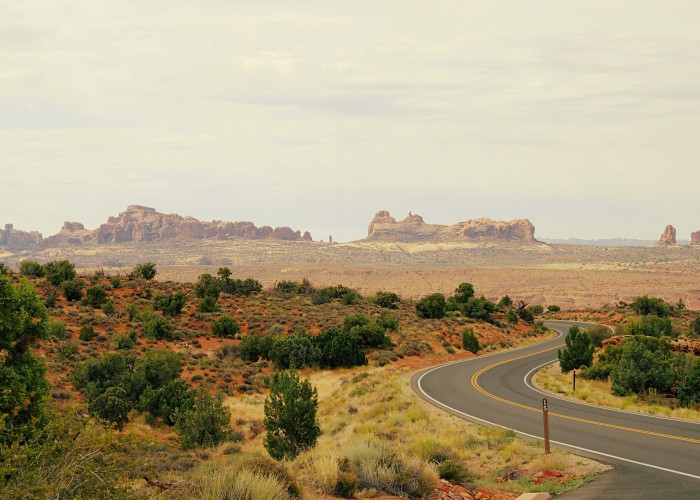Horseshoe Canyon, part of Canyonlands National Park in Utah, is one of the most remarkable hiking destinations in the American Southwest. It is best known for its world-famous rock art panels, particularly the Great Gallery, which features life-sized figures painted by ancient Native American cultures thousands of years ago. Horseshoe Canyon .
Unlike the main sections of Canyonlands, Horseshoe Canyon is somewhat isolated and offers a quieter, more immersive trekking experience. The canyon combines desert landscapes, dramatic sandstone walls, and fascinating archaeological treasures. It attracts hikers, history enthusiasts, and adventurers who seek both natural beauty and cultural significance.
Best Time to Visit
- Spring (March to May): Mild temperatures and blooming desert flowers make spring one of the best times for hiking.
- Fall (September to November): Cooler weather and fewer crowds create excellent conditions.
- Summer (June to August): Very hot with limited shade. Hiking is possible but recommended only in early mornings.
- Winter (December to February): Chilly but peaceful. Snow is rare but possible at higher elevations.
Tip: The canyon can be extreme in both heat and cold. Aim for spring or fall for the most comfortable trek.
How to Reach Horseshoe Canyon
Horseshoe Canyon is somewhat remote, and reaching it requires careful planning.
- By Air: The nearest major airport is Salt Lake City International Airport (about 4.5 hours away by car). Grand Junction, Colorado, and Moab, Utah, also have regional airports.
- By Road: From Green River or Hanksville, you’ll need to drive on a mix of paved and dirt roads. High-clearance vehicles are recommended, especially in wet weather.
- By Train: Amtrak serves Green River, Utah, but you’ll need a rental car to continue to Horseshoe Canyon.
Entry Fees and Permits
- Park Entry Fee: Horseshoe Canyon is part of Canyonlands National Park. The standard entry fee is approximately $30 per vehicle, valid for 7 days. Fees are subject to change.
- Permits: Day hikes typically don’t require special permits. Overnight stays in the area may require a backcountry permit.
Food Availability and Meal Options
There are no food services within Horseshoe Canyon. Visitors must bring their own water, snacks, and meals. Nearby towns like Green River, Moab, and Hanksville offer restaurants, grocery stores, and convenience shops to stock up before your trip.
Recommendation: Carry high-energy snacks such as trail mix, energy bars, dried fruits, and plenty of drinking water.
Packing List and Essentials
When preparing for Horseshoe Canyon, pack light but don’t skip essentials:
- Sturdy hiking boots with good grip
- Wide-brim hat and sunglasses for sun protection
- Refillable water bottles or hydration pack (minimum 3 liters per person)
- Lightweight, breathable clothing with layers for temperature shifts
- Sunscreen and lip balm
- First-aid kit
- Snacks and packed meals
- Navigation tools (map, compass, or GPS)
- Camera or binoculars (optional for viewing rock art)
Safety Tips and Local Regulations
- Hydration is crucial. The desert climate is dry, and water sources are scarce.
- Stay on marked trails. This protects fragile desert ecosystems and preserves archaeological sites.
- Respect rock art. Do not touch or damage ancient pictographs or petroglyphs.
- Weather awareness. Flash floods can occur unexpectedly in canyons. Check conditions before your trek.
- Wildlife caution. Snakes and scorpions live in the area—watch your step and avoid disturbing them. Horseshoe Canyon .
Tips for Beginners or First-Time Visitors
- Start early in the day to avoid the afternoon heat.
- Pace yourself—while the hike isn’t extremely long, the desert conditions can make it challenging.
- Carry more water than you think you’ll need.
- Take breaks in shaded areas whenever possible.
- If visiting for the first time, consider going with an experienced hiker or group.
Local Customs or Cultural Etiquette
Horseshoe Canyon is not just a hiking destination—it is also a cultural and historical site. The rock art panels are sacred to Indigenous communities.
- Treat the area with respect.
- Avoid loud noises or disruptive behavior near the Great Gallery and other art sites.
- Follow the “Leave No Trace” principle: pack out all trash and leave the canyon as you found it.
FAQs about Horseshoe Canyon
1. How long is the Horseshoe Canyon hike?
The hike is about 7 miles round trip, taking 4 to 6 hours depending on pace.
2. How difficult is the hike?
Moderate. The trail involves a steep descent into the canyon and some sandy stretches that can be tiring.
3. What is the altitude of Horseshoe Canyon?
The rim is around 5,200 feet above sea level, while the canyon floor is lower.
4. Are restrooms available?
Vault toilets are available at the trailhead but not inside the canyon. Horseshoe Canyon .
5. Can I camp in Horseshoe Canyon?
Camping is not allowed inside the canyon, but nearby BLM land and Canyonlands backcountry areas offer options with permits.
6. Is the canyon suitable for kids or families?
Yes, but only for families prepared for desert hiking. Bring extra water, snacks, and sun protection for children.
7. Are dogs allowed?
Pets are not allowed on trails within Canyonlands National Park.
Conclusion
Horseshoe Canyon is a unique destination that combines natural desert beauty with rare archaeological treasures. Hiking here is more than just a trek—it’s a journey into the ancient past of the Southwest. With proper planning, respect for local heritage, and an awareness of desert conditions, your visit will be safe, memorable, and deeply rewarding. Horseshoe Canyon .






Leave a Reply